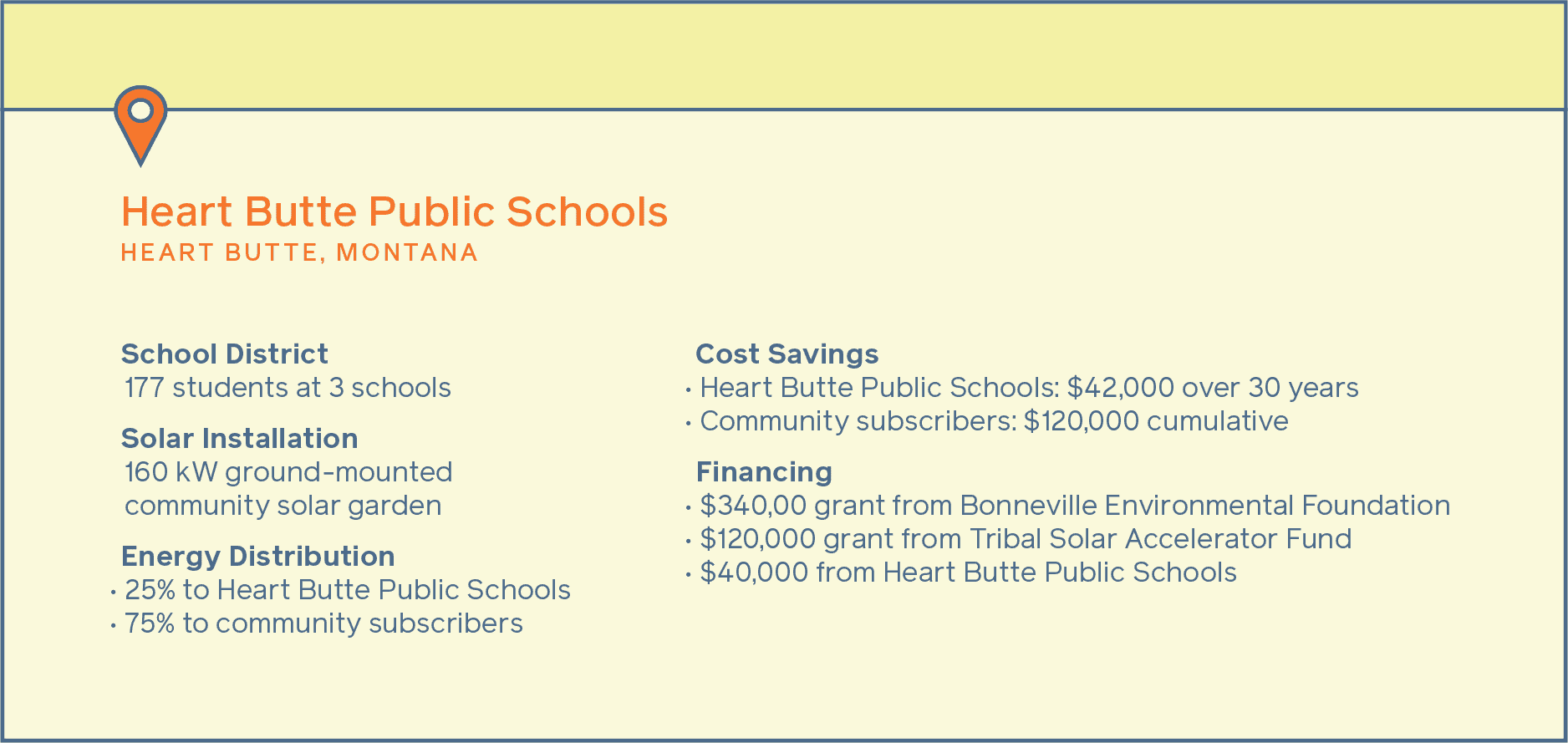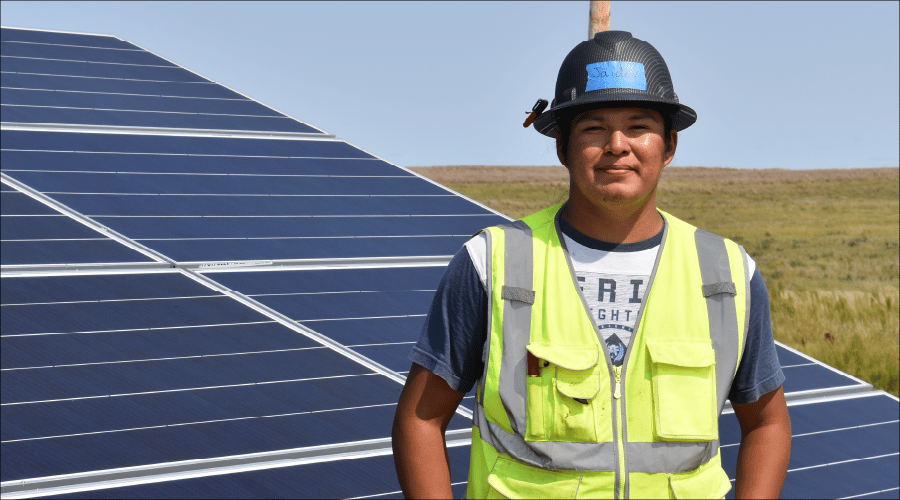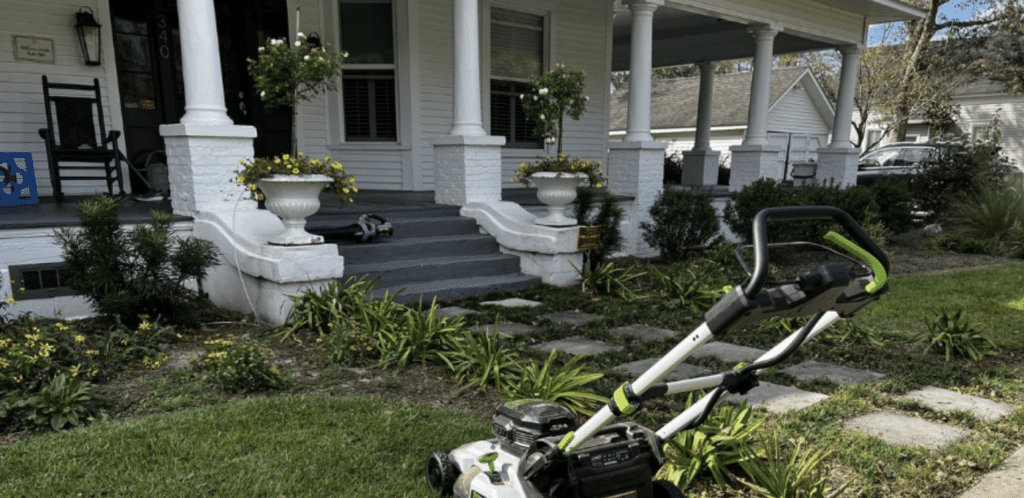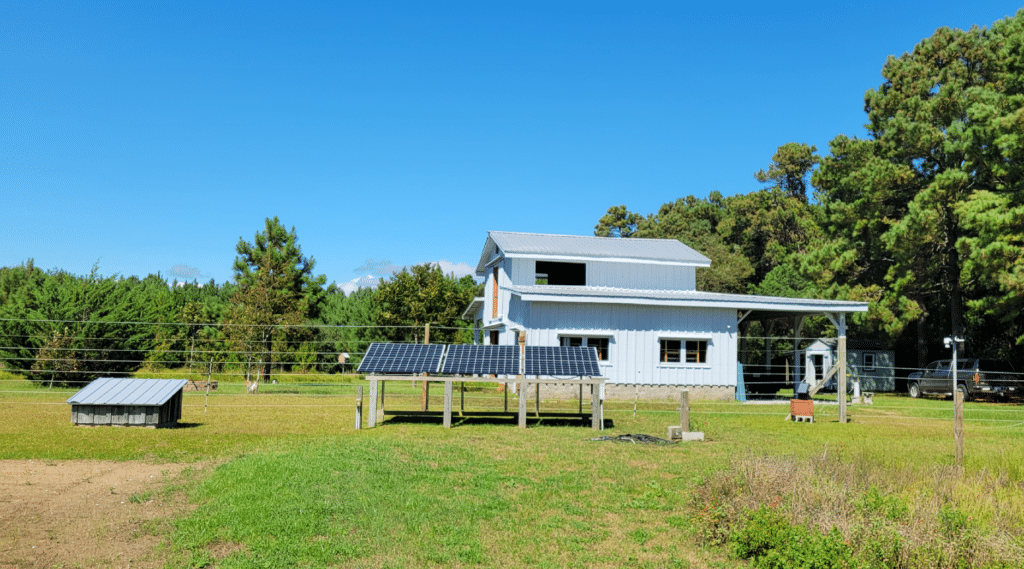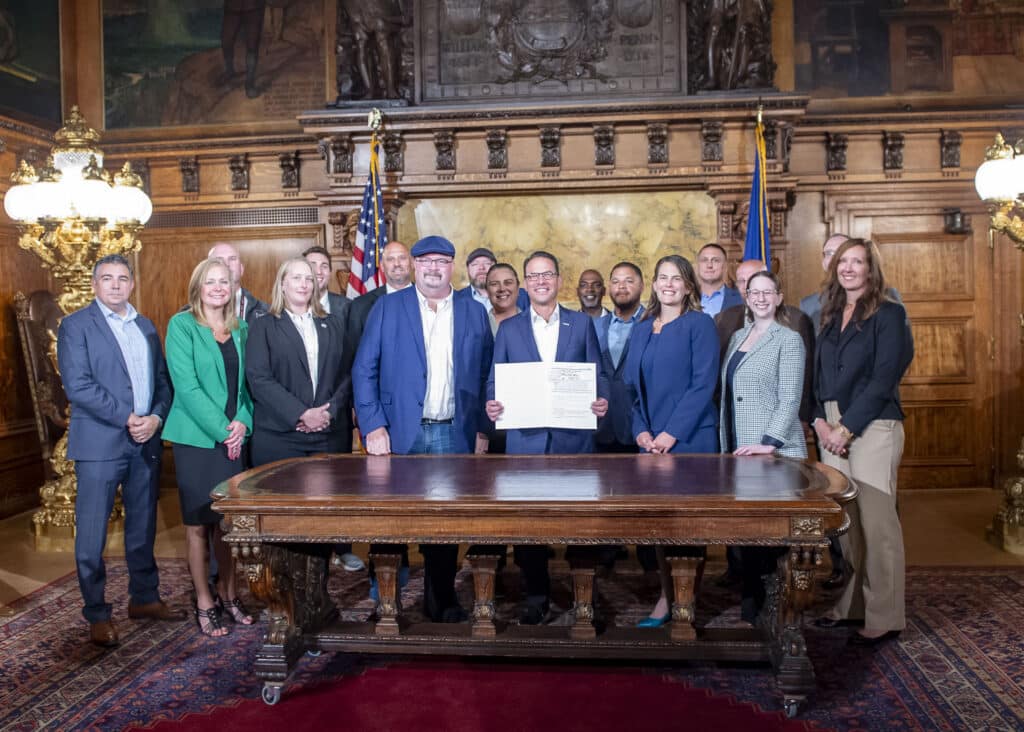This case study was originally published in the 4th edition of Brighter Future: A Study on Solar in U.S. Schools (2022).
The local high school on the Blackfeet Indian Reservation, home to around 9,100 tribal members in Heart Butte, Montana, is the host of a community solar project that is serving the community by reducing energy costs. With almost 40% of the population living in poverty, more than twice the state average, families are struggling to pay their electricity bills. Heart Butte Public Schools teamed up with local utility Glacier Electric Cooperative and nonprofit GRID Alternatives to develop a solution that would help the school district and its neighbors save money. With grant funding provided by the Tribal Solar Accelerator Fund and Bonneville Environmental Foundation, the district installed a 160 kW community solar array at Heart Butte High School in July 2021.
What Is Community Solar?
Equitable access to solar power is growing through a practice called community solar, also known as shared solar or solar gardens. Community solar enables customers (or subscribers) to buy or rent part of an off-site solar system and receive credit on their energy bill for the electricity it produces. This arrangement allows people to enjoy the benefits of solar without having to install their own system, making solar accessible to those who rent or cannot afford to install solar.
Heart Butte High School is expected to save $42,000 in electricity costs over 30 years. Households can subscribe, with no upfront costs, to the community solar program and anticipate savings of approximately $200 per year. Glacier allows 20 community members to enroll per year and the program is fully subscribed. Moving forward, Glacier will rotate enrolled subscribers annually to spread the benefits to as many new households as possible. The program is expected to reduce electricity costs for the community by a total of $120,000.
“We thought it was a good idea. Instead of just powering the school, we’re sending 75% of the electricity to the community. That’s because we’re all about the kids’ basic needs being met before they come in to learn. It’s putting money back into the pockets of kids and their families every month, and that’s a direct benefit to the people,” explains Mike Tatsey, Heart Butte Public Schools Superintendent.
This community solar project brought another important benefit to Heart Butte students and tribal members: workforce development. GRID employed community members to install the solar array and provided online and in-person training to develop those skills within the tribal community. GRID provided hands-on training for Heart Butte High School students, exposing them to possible career paths in renewable energy and helping them acquire job skills. Trainees learned about solar systems, acquired the necessary skills to complete a solar installation, and got an opportunity to complete a roof or ground installation. The students received pay and benefits for their work as well as equipment they would need in the field.
One student, Jaiden Comesatnight, got involved with GRID’s student training after learning about the Heart Butte Community Solar Project from his counselor and principal. He joined the project a few months after graduating high school and worked on the solar installation for about a month and a half. After his work on the project, GRID offered him a full-time job as a solar installer.
“My uncle has worked on wind turbines, but I’m the first in my family to work in the solar industry,” says Jaiden. “One thing I enjoy the most about my job is that I get to travel around the country, something many of my family members on the reservation haven’t experienced before.”
